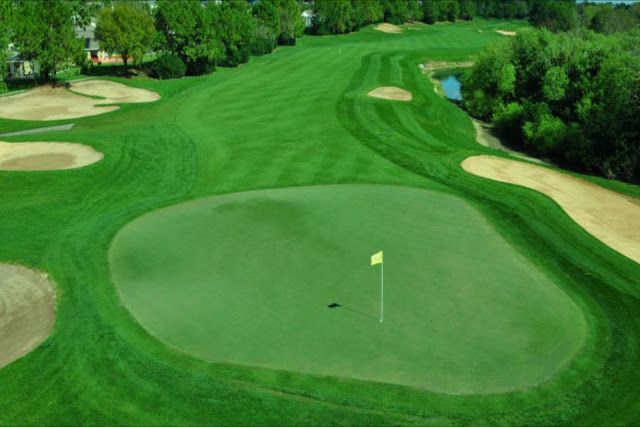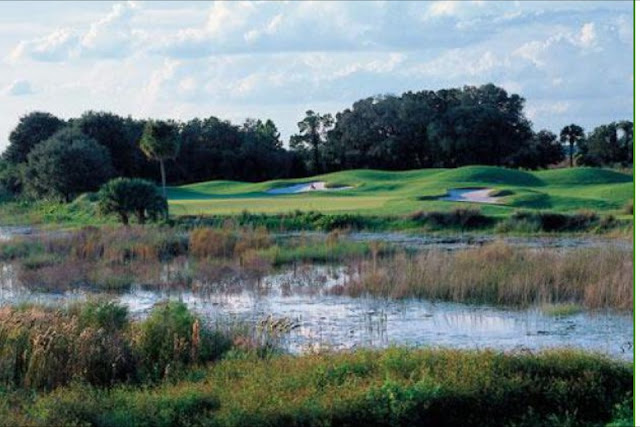When Whiskey Creek first opened, every major golf publication had a picture of the eighteenth hole.
(Golf Magazine called it "a spectacular finishing hole.")
This hole was the catalyst of my desire to see Whiskey Creek, and when I went on my 2004 spring golf trip, Whiskey was possibly the highlight.
The strength of Whiskey Creek lies in it's great collection of par fives. The fourth is a great uphill three shotter. The ninth, my favorite, is risk/reward. A gnarly tree in the ravine acts as the dividing point, conservative shots to the left, while a 225 yard carry to the right can make the hole reachable. The sixteenth is uphill all the way with a well defended green making the player think twice bout going for it. And finally the eighteenth with the stone house in the middle of the fairway. There's plenty of room down the right, but there are other options including carrying the unique hazard which long hitters can do. The lake fronting the green adds to the excitement and drama!
The par threes are all very good, with the eleventh, pictured above, possibly being the best. The shot is across vegetation to a green beautifully benched into the hill. The fifteenth also gets a lot of recognition. It's a 222 yard par three over water and sand.
(Fifteenth at sunset.)
Typically when the par fives and par threes are as good as they are at Whiskey, the course has a chance at being something very special. J Michael Poellot did a nice job with the par fours, but none of them really standout as being great. The exception might be fourteen, a downhill par four with water guarding the left.
There is nothing wrong with the other holes, I just didn't find them to be better than the usual par fours at other courses. They were solid.
(This is the fifth, a dogleg left par four over some outcroppings. Beautiful view of the mountains in background.)
(The shaping of the course is pleasing to the eye. It fits the CCFAD qualifications.)
I can remember many of the holes at Whiskey Creek, but still a significant amount fails me. This means looking at my notes from twelve years ago. The younger me was very impressed with it, and it's one of the courses I would love to see again. It is the #4 rated public course in Maryland. It's definitely worth playing. I give it a 6 (very good)!













































